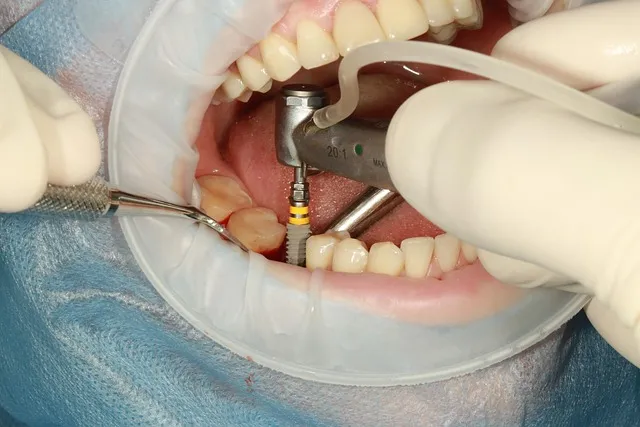Good oral health is important because small problems in your mouth, for example dirty teeth or swollen gums, can lead to much larger and harder to deal with problems down the road, for example heart disease. Dental cleaning is a key part of keeping maintaining a healthy mouth for it prevents the build-up of plaque—a sticky film that coats teeth and is caused by bacteria—and other unwanted substances. There are different types of dental cleaning, the most common and best known one being prophylaxis cleaning, also known as routine cleaning, and the others being deep cleaning, periodontal cleaning, and gross debridement cleaning.
Routine Cleaning
It is recommended by the American Dental Association, ADA, to visit the dentist regularly and during these scheduled visits patients should have their teeth checked and cleaned. These routine cleanings are used by dentists not only to remove plaque and similar substances, but to also check for cavities, to check gum health, and to check if there are any problems in dire need of addressing. Not only do these periodic cleanings ensure patients are left with sparkling teeth and fresh breath, they also help patients save money in the long run. The cost of a prophylaxis cleaning is nothing compared to the hefty prices of a root canal, a cavity, or treatment for a cardiovascular disease—all of which are possible results of poor oral care. Most dentists suggest their patients have a routine cleaning twice a year, every six months, so that way they can stop any problems in their tracks before they become too expensive and unpleasant to deal with. This procedure is generally painless and tends to take anywhere from 30 minutes to an hour.- The Parts of a Routine Cleaning
Deep Cleaning
Deep cleaning, sometimes referred to as scaling and root planning, is used for patients who have developed or are at risk of developing gum disease indicated by bleeding or swollen gums and loose teeth. This type of dental cleaning cleans not only the teeth but also areas below the gum line, for instance the gum pockets that may have formed due to gum disease. The scaling part of this process is when dentists remove plaque and tartar from teeth and this can take between one to two hours. The root planing part of this process is when plaque and tartar or cleaned from the roots of teeth, effectively smoothing them and making it easier for gums to reattach to teeth. To help make the experience more comfortable, clients might receive a local anesthetic. This type of dental cleaning can require multiple appointments as well as a recovery period of a few days, but the benefit of a fresh smile and breath as well as healthier gums make it well worth the trouble. Periodontal cleaning is deep cleaning but done more regularly. Rather than being a one-time deep cleaning appointment, patients are suggested to return every 3 to 4 months of periodontal maintenance. This helps ensure the gum disease does not worsen to a point of no return.Gross Debridement Cleaning
This type of dental cleaning is reserved for those who have extreme plaque and tartar buildup, for instance those who do not visit a dentist regularly. Gross debridement cleaning is done because the amount of plaque and tartar is so significant the dentist or dental hygienist can't asses the patient's oral health. A gross debridement may be necessary for both healthy and damaged teeth, a difference from routine cleanings which are for healthy teeth and deep cleanings which are for treating gum disease. This procedure requires a certain electronic tool that uses ultrasonic vibrations to remove unwanted substances. This tool can also help to remove stains on teeth, further contributing to a pearly white smile for patients. After the extreme buildup has been cleared, the gross debridement may be followed up with a prophylaxis cleaning or scaling and root planning depending on the state of the teeth and gums.
Reviewed by







